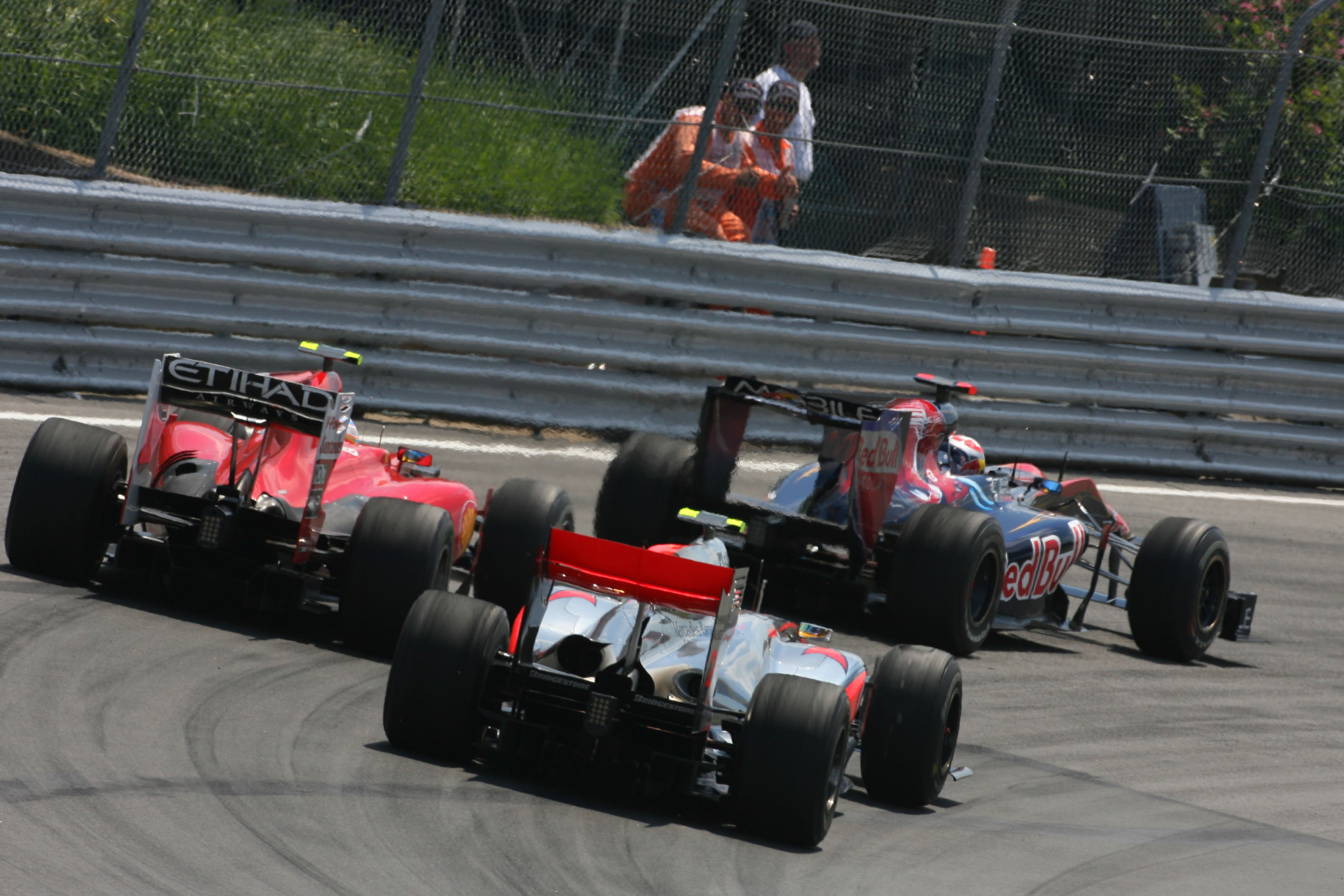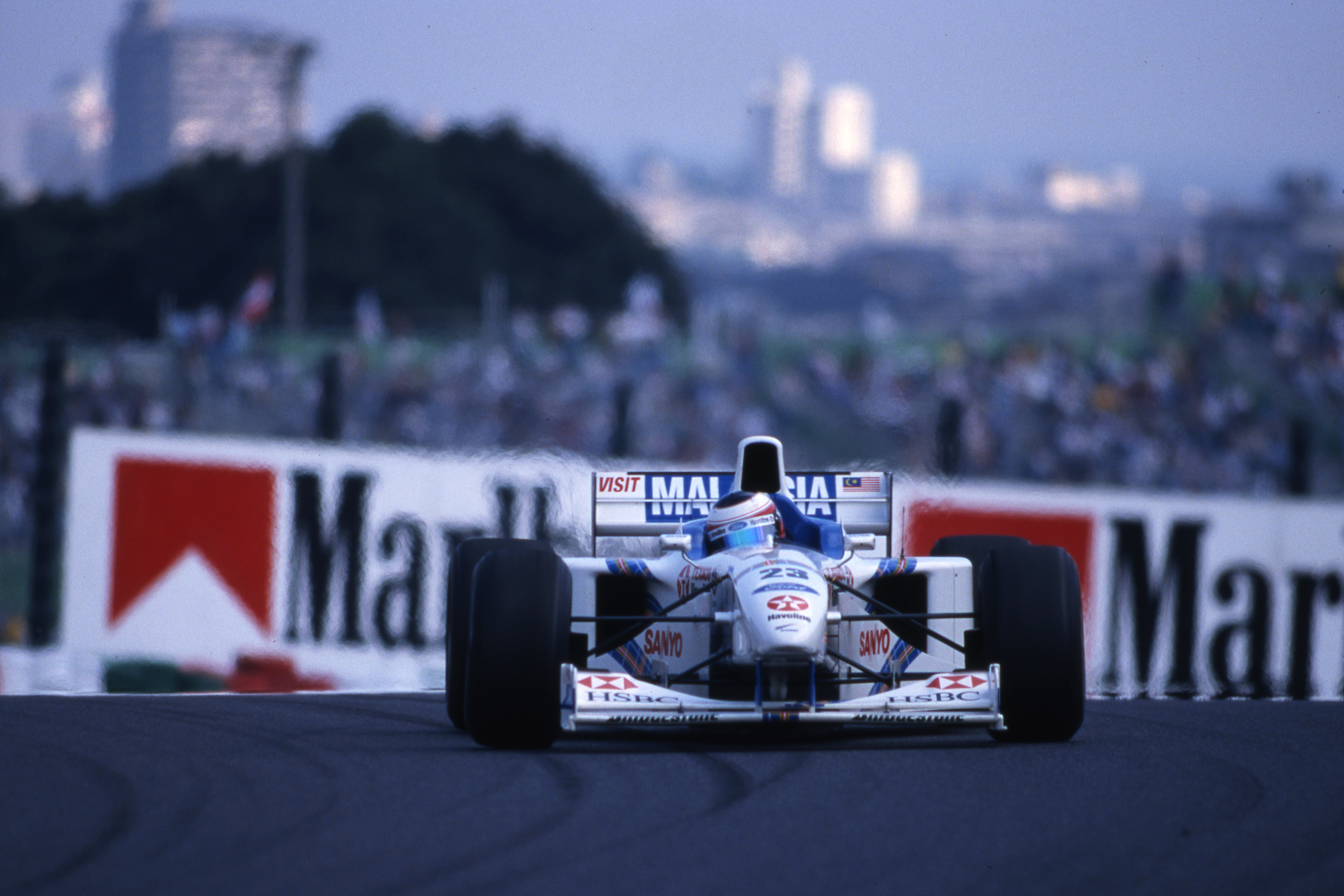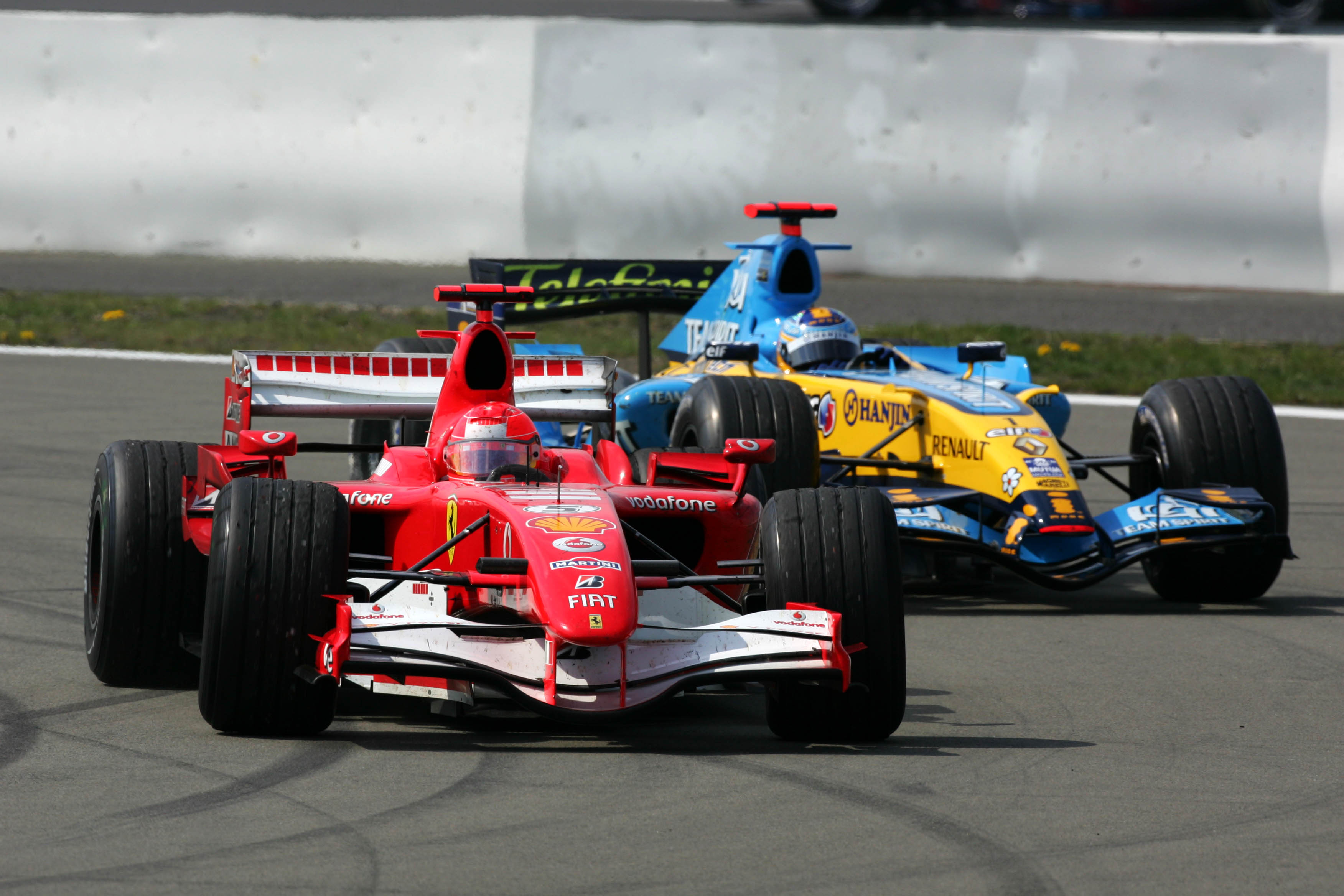Should Bridgestone be successful in its bid to become Formula 1’s spec tyre supplier from 2025, its history in grand prix racing shows it will not only have the capabilities to do so effectively but also reveals how it will likely approach it.
The biggest difference is that Bridgestone was previously in F1 as part of a tyre war. While it had two phases during that as the sole tyre supplier, this was using technology rooted in tyre-war development – even in 2009-10, when it produced tyres for F1’s return to slicks. If it does return, it will be working under the constraints Pirelli has been – with limited testing and delivering to far more in-depth ‘target letter’ demands given F1’s attempts to engineer a more exciting show with tyre characteristics.
The characteristics of the tyres are not part of the tender process, it’s simply an exercise in demonstrating the technical commitment and capability to F1, as well as laying out various intended ways of operating and the commercial basis for the FIA to make its selection on. This should show capability to deliver on whatever F1 asks of it, but it won’t be about Bridgestone proposing the tyre characteristics it wants because it will have to agree to work to deliver on future target letters. Should it attempt to dictate to F1 what it wants to do, its chances of winning the tender will surely be zero. Like Pirelli has been, it will be constrained by the demands of its customer – F1.
So this is a very different set of parameters for Bridgestone, which would also be working with cars that are far heavier in terms of minimum weight (currently 798kg compared to 620kg in its last season back in 2010) and that produce higher downforce. While Bridgestone produced tyres that drivers loved last time given they would usually allow pushing throughout stints, this will be a very different challenge and a very different sets of parameters.

Ironically, it was Bridgestone tyres that created F1’s demand for high-degradation rubber. This emerged from the 2010 Canadian Grand Prix, a rarity in 2010 in that it produced a dramatic multi-stop race rather than the one-stoppers that proliferated. But that was the result of happenstance, namely Bridgestone bringing super-softs and the unusual track surface.
“The surface of Canada is one of the special ones of the season,” said Bridgestone F1 boss Hirohide Hamashima after the 2010 race. “It’s also very smooth, so the tyres didn’t deform enough to get enough temperature, especially in the beginning of the race. That’s why the super softs had much bigger graining than usual, as did the mediums.”
The lack of temperature meant more sliding, which caused the graining, which in itself accelerates degradation. But this was very much an outlier, albeit one that led to F1 teams and the powers that be realising the potential for increased tyre stops to liven up the show. That also means this was atypical of Bridgestone.
Bridgestone won’t have forgotten what it learned in F1 last time round and given ongoing research it will doubtless have ideas about how to achieve the characteristics demanded compared to Pirelli. That doesn’t automatically mean better, but tyre companies do vast amounts of research and invest heavily in technology, meaning no two companies will have the same philosophies and technologies.
That it had such a formidable grasp of the way wear worked perhaps hints that it might be able to pursue a path of creating a drop-off in performance more through the physical wear of the tyre than thermal degradation and the resulting impact on the properties of the tyre. But given the shift in parameters, there’s no guarantee of that. While its previous generations of F1 tyres and what was learned during that period will all be utilised by Bridgestone, it will far from picking up where it left off.
If it is to win the tender, it will not only need to show that it could potentially deliver on whatever demands F1 and the FIA have of it, but also a willingness to do so. This is a very different F1 environment that it is entering, but its F1 history tells us that it will go into this with its eyes open and fully cognisant of the challenge that’s in front of it. After all, it took most by surprise with its performance straight out of the box when it came into grand prix racing full-time.

Bridgestone was a relative latecomer to F1, at least when it came in full time, but stands as the third-most successful in terms of number of victories behind only Goodyear and Pirelli. From 1997-2010, it fought successfully in two tyre wars and produced formidable products that harnessed cutting-edge materials and technology.
Bridgestone first dabbled in F1 in the inaugural world championship Japanese Grand Prix at Fuji in 1976. What was originally purely an advertising opportunity turned into supplying tyres rooted in its Formula 2 technology. That led to Kazuyoshi Hoshino’s famous outing in a Tyrrell run by Heros Racing, running as high as third before retiring because there weren’t enough wheelrims to mount addition wet tyres. The following year, the two-car Kojima entry ran Bridgestones but with the Japanese GP dropping off the calendar, that was it.
The real history of Bridgestone Motorsport starts in 1981, entering European Formula 2 with Geoff Lees winning the title after switching to Bridgestone rubber having started out on Pirellis. Michelin soon arrived to spoil that particular party but Bridgestone had a foothold in European motorsport.
But although it took until 1997 for it to return to F1, what happened in the build-up to that tells you everything you need to know about Bridgestone’s rigorous approach.
Its association with Honda had triggered its F2 entry in Europe and it was with Mugen-Honda that it started on its path to F1. Astonishingly, that tyre development programme can be tracked all the way back to 1984 when Bridgestone started to supply tyres for a Mugen-Honda F1 engine development programme that was soon using an adapted Reynard F3000 car. Later, the project used a Tyrrell F1 car. Even before it joined the F1 grid, Bridgestone felt it had tyres that surpassed the Goodyears used in grand prix racing. While Bridgestone won’t have been able to have such a long run at 2025, you can be sure that within its walls it has been quietly chipping away at F1 candidate tyres just as it was in back in the 1980s and 1990s before it entered F1.

So it was no surprise that when Bridgestone did arrive in F1 in 1997, it had a strong product. Testing had intensified the year before with Ligier and Arrows machinery, with around 8000km racked up in Europe in 1996. And the Bridgestone-shod cars were setting some eye-catchinglap times. The progress had been so good that the entry that was originally announced for 1998 was brought forward a year.
Prost, Arrows, Minardi and Stewart ran Bridgestones in that first season. While the company’s inexperience meant that the performance was inconsistent, when the Bridgestones worked well, as they often did, they worked superbly. Unsurprisingly, McLaren and Benetton jumped to Bridgestone in 1998 with Goodyear then withdrawing at the end of that season.
But memories of Bridgestone’s time in F1 are dominated by F1’s most ferocious tyre war. Michelin returned to F1 in 2000 and until the end of 2006, the battle raged. Usually, Bridgestone prevailed thanks to its close alliance with Ferrari with Michelin prevailing only with Renault in 2005 and 2006. But things might have been different but for the controversial mid-season tyre ruling in 2003.
The teams were informed ahead of that year’s Italian Grand Prix that the tyre tread would be measured after the race, rather than before in order to inspect the tyres of evidence of systematic exceeding of the maximum tread rules. This followed lobbying from Bridgestone. Michelin had a tyre that, under lateral load, exceeded that maximum thanks to the overhang of the sidewall under said load. The tyre was entirely legal with the previous way it was measured, but not allowed thereafter, with Michelin making rapid changes to its tyres to comply.
What was fascinating about this era was the different approach. Bridgestone by and large had a rounder shape, in particular at the front. Michelin tended towards a more compliant sidewall that offered a larger contact patch for grip. The Bridgestones tended to have grippier compounds but a stiffer sidewall, albeit starting to work on the Michelin approach in 2004. It took time, but Michael Schumacher’s famous win at Imola in 2006 was the first using the more compliant sidewall concept. In between was the pain of 2005 and the ban on tyre changes, which hurt Bridgestone – and not by accident.

By the end of the tyre war in 2006, Bridgestone once again had the superior product having mastered the more compliant sidewall. But with F1 switching to control tyres in 2007, Michelin was off – thanks to a combination of this change and the fallout from Indy 2005 when its cars couldn’t race for safety reasons – and the war was over.
Bridgestone continued as the sole supplier and produced F1’s first non-grooved slick rubber since its first year in 2010. That was a year mostly of one-stop races with Bridgestone’s tyres durable and allowing teams to push hard. At the end of the year it pulled out, citing delivering its goals in F1 by transforming Bridgestone into one of the most recognised tyre brands in Europe.
Whether or not Bridgestone returns in 2025 will depend on the details of its tender submission. Realistically, it will be second favourite given Pirelli is the incumbent, but should Bridgestone return there’s no doubt it would do the job well. That doesn’t necessarily mean better than Pirelli, but it puts F1 in the strong position of having two ideal candidates to choose from.



